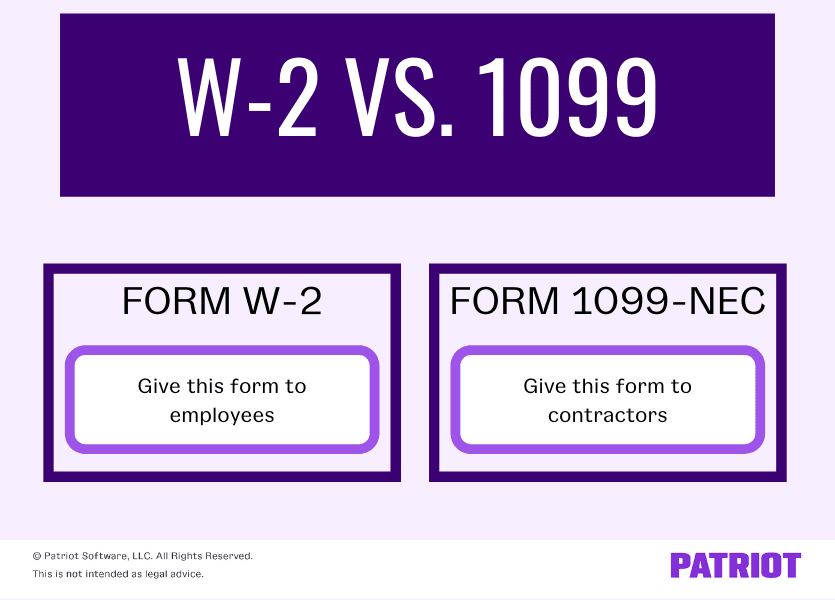After the end of every year, you need to report your workers’ wages. You must send a form to the worker and governments. But, which IRS form do you send? The form you use—Form 1099 vs. W-2—depends on if the worker was a contractor or an employee.
Form 1099-NEC vs. W-2
There are two types of wage reporting forms for the two types of workers. You will use Form W-2 for employees and Form 1099-NEC for independent contractors.

Form W-2
Employees are on your staff. You pay them regular wages and withhold taxes from their wages. You must report their annual wages and withheld taxes on Form W-2.
You must complete and send Form W-2 to employees by January 31. Also, you must send copies of the form to the Social Security Administration and the state government (if applicable) by January 31.
Form 1099-NEC
Independent contractors are not on your staff. You hire them for short-term projects that are unrelated to your core business. You pay their rates, but you do not withhold taxes from their wages. Instead, contractors pay the taxes themselves. You will report their annual earnings on Form 1099-NEC.
You must complete and send Form 1099 to independent contractors by January 31. And, you must send the form to the IRS and state tax department (if applicable) by the same date.
Difference between W-2 and 1099 workers
So, how do you determine who receives a Form W-2 and who receives a Form 1099-NEC? You need to be able to tell the difference between employees and contractors.
You can use the three-factor common law rules from the IRS to determine if a worker is an employee or contractor.
- Behavioral Control: Does your business control what the worker does, including how they do their job?
- Financial Control: Do you include the business aspects of the worker’s job (e.g., worker payments, expense reimbursements, provided tools)?
- Type of Relationship: Do you and the worker have a written contract? Do you provide employee benefits (e.g., insurance, sick pay)? Will your relationship continue after the project ends? Is the work performed a key part of your business?
If you’re still unsure if your worker is an employee or an independent contractor, you can send Form SS-8 to the IRS. After you submit this form, the IRS will send you a determination of your worker’s classification.
Should you ever give a Form 1099-NEC and a Form W-2 to the same worker?
There are times when you might need to file a Form W-2 and Form 1099-NEC for the same worker.
For example, you might hire a contractor to create a specific marketing campaign for your business. After the contractor’s work is done and the campaign is over, you decide that you want to hire an employee who will permanently do marketing for you. You end up hiring the contractor who did the previous campaign for you. You will need to file both Forms W-2 and 1099-NEC for this employee because they were both an employee and a contractor during the year.
Let’s look at another example. Let’s say you have an employee who helps create your product. This employee also has a snow removal business. During the winter, you hire the employee to clear your parking lot. While the worker is removing snow, they are a contractor. You will file a Form W-2 for the employee’s wages. And, you will file a Form 1099-NEC for the payments you made for snow removal services.
If you have employees and contractors, check out Patriot’s Full Service payroll software. We’ll file your Forms W-2 and 1099s. Start your free trial today!
This article has been updated from its original publication date of April 13, 2015.




